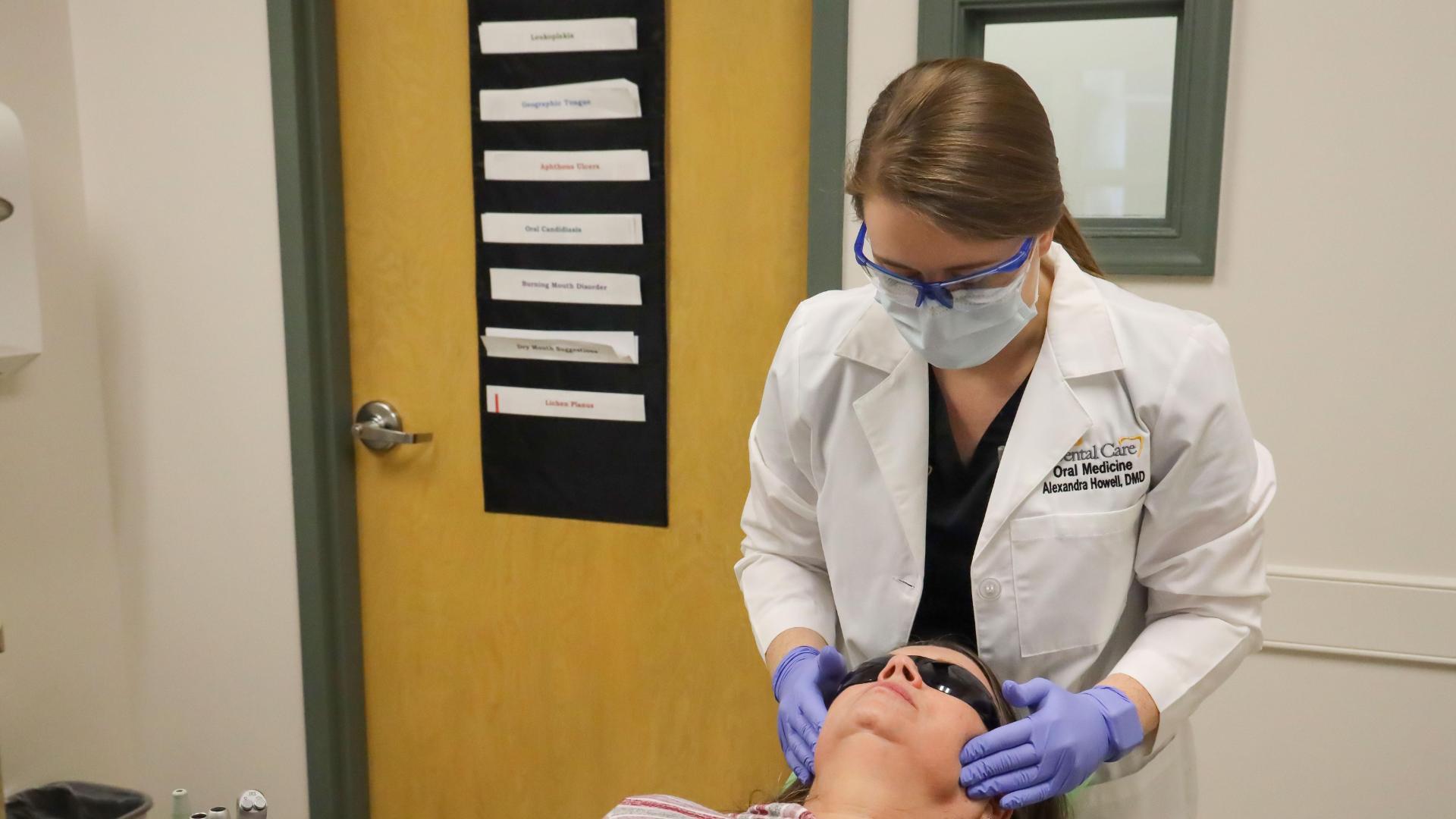Report on North Carolina’s Foreign Direct Investment Strategy and Alignment with Sustainable Development Goals
Executive Summary
In 2024, North Carolina solidified its position as a leading destination for foreign direct investment (FDI) in the United States, ranking among the top five states. This report, based on an interview with Governor Josh Stein, outlines the state’s strategy for attracting investment, its focus on key industrial sectors, and the alignment of these efforts with the United Nations’ Sustainable Development Goals (SDGs). The state leverages its educational infrastructure, skilled workforce, and strategic incentives to foster economic growth that is both robust and sustainable.
Strategic Investment in Health and Innovation (SDG 3, SDG 9)
A cornerstone of North Carolina’s FDI success is its thriving biotechnology sector, which directly contributes to global health outcomes and industrial innovation.
- Genentech Investment: A recent $700 million investment by Genentech, a Roche subsidiary, will establish a new facility for obesity medicines. This project is a significant advancement for SDG 3: Good Health and Well-being.
- Technological Advancement: The facility is described as the most technologically sophisticated fill facility in the Roche network, highlighting a commitment to SDG 9: Industry, Innovation, and Infrastructure.
- Educational Ecosystem: The state’s “Research Triangle Park,” situated between Duke University, North Carolina State University, and the University of North Carolina at Chapel Hill, provides a pipeline of talent, supporting SDG 4: Quality Education as a foundation for innovation.
Advanced Manufacturing and Decent Work (SDG 8)
North Carolina is strategically focusing its reshoring efforts on advanced manufacturing to create high-quality employment opportunities, a core tenet of SDG 8: Decent Work and Economic Growth. The objective is to attract manufacturing jobs that provide sustainable livelihoods for residents.
Key Characteristics of Targeted Employment:
- Provides a living wage sufficient to support a family.
- Enables homeownership and financial stability.
- Includes access to health insurance.
- Allows for investment in children’s higher education and skills training.
This approach prioritizes long-term economic security and social well-being over the repatriation of all offshored manufacturing, focusing on sectors that build a resilient middle class.
Incentives and Partnerships for Sustainable Growth (SDG 17)
The state employs a competitive incentive package to attract corporate investment, viewing it as a necessary tool for fostering public-private partnerships, in line with SDG 17: Partnerships for the Goals. While acknowledging the uncertainty of federal incentives, North Carolina’s strategy is not solely reliant on having the largest financial offering. The state’s primary incentive mechanism is the Job Development Investment Grant, which is performance-based and contingent on companies meeting their investment and job creation targets. This ensures that public funds are tied directly to tangible economic and social benefits.
Governor’s Vision for Future FDI (SDG 4, SDG 8, SDG 11)
Governor Stein’s administration aims to continue the state’s FDI momentum by promoting its key assets, which collectively support a sustainable and inclusive economic environment.
North Carolina’s Core Assets for FDI Attraction:
- Educated Workforce (SDG 4): The state’s 58 community colleges and 67 universities and colleges produce a skilled and knowledgeable workforce at all levels.
- Manufacturing Strength (SDG 8): North Carolina possesses the largest manufacturing workforce in the southeastern United States, providing a deep talent pool for industrial investors.
- Sustainable Communities (SDG 11): As one of the fastest-growing states, North Carolina offers a high quality of life, affordability, and excellent infrastructure, making it an attractive place for people to live and work.
The overarching goal is to position North Carolina as a premier location where companies can access a superior workforce within a business-friendly environment, thereby driving economic growth that enhances the well-being of its communities.
Analysis of Sustainable Development Goals (SDGs) in the Article
1. Which SDGs are addressed or connected to the issues highlighted in the article?
The article on North Carolina’s economic strategy and foreign direct investment (FDI) connects to several Sustainable Development Goals. The primary focus is on economic development, job creation, and technological advancement.
- SDG 8: Decent Work and Economic Growth: The core theme of the article is attracting FDI to create jobs and foster economic growth. The governor’s comments on wanting jobs that allow people to “earn a good enough living to support their family” and the state’s record FDI project announcements directly align with this goal.
- SDG 9: Industry, Innovation and Infrastructure: The article heavily emphasizes North Carolina’s role as a “major US manufacturing hub” and its ambition in the “biotech” sector. The development of the Research Triangle Park, the new “supremely high technology” Genentech facility, and the focus on “advanced manufacturing” all point to this SDG’s aim of building resilient infrastructure, promoting inclusive industrialization, and fostering innovation.
- SDG 4: Quality Education: The ability to attract high-tech industries is explicitly linked to the state’s educational infrastructure. The article mentions “five world-class research institutions, 67 universities and colleges, and 58 community colleges” as key assets for providing a “skilled and knowledgeable” workforce, which is central to SDG 4.
- SDG 17: Partnerships for the Goals: The article discusses the partnership between the state of North Carolina and a private corporation (Roche/Genentech) to achieve economic goals. The state’s use of incentives and its efforts to create a “business-friendly environment” to attract foreign investment are examples of public-private partnerships aimed at mobilizing financial resources for development, which is a key aspect of SDG 17.
2. What specific targets under those SDGs can be identified based on the article’s content?
Based on the article’s discussion, several specific SDG targets can be identified:
- Target 8.2 (Promote economic productivity through diversification and innovation): The article highlights North Carolina’s focus on high-value sectors like biotech and advanced manufacturing. The new Genentech facility, described as the “most sophisticated fill facility in the entire Roche universe,” is a clear example of technological upgrading to boost economic productivity.
- Target 8.5 (Achieve full and productive employment and decent work): Governor Stein’s desire for jobs that provide a good living wage, health insurance, and opportunities for families directly reflects the goal of “decent work for all.” The state’s success in attracting FDI is presented as the primary means to create these employment opportunities.
- Target 9.2 (Promote inclusive and sustainable industrialization): The article’s focus on North Carolina as a “major US manufacturing hub” and having the “largest manufacturing workforce in the south-east” directly relates to this target of raising industry’s share of employment.
- Target 9.5 (Enhance scientific research and upgrade technology): The mention of the Research Triangle Park, which is centered between three major universities, and the state’s success in attracting a “pioneer” biotech company like Genentech, demonstrates a commitment to enhancing scientific research and upgrading technological capabilities in its industrial sectors.
- Target 4.4 (Increase the number of people with relevant skills for employment): The article explicitly links the state’s educational system, including its numerous universities and community colleges, to its ability to provide a “skilled and knowledgeable” workforce for advanced manufacturing and biotech industries. This directly supports the target of equipping youth and adults with relevant technical and vocational skills.
3. Are there any indicators mentioned or implied in the article that can be used to measure progress towards the identified targets?
Yes, the article mentions or implies several quantitative and qualitative indicators that can be used to measure progress:
- Volume of Foreign Direct Investment (FDI): The article explicitly states that North Carolina “attracted a record number of FDI project announcements in 2024” and mentions a specific “$700m investment by Roche’s subsidiary Genentech.” This is a direct indicator for measuring the success of investment promotion policies (relevant to SDG 17) and their contribution to economic growth (SDG 8).
- Manufacturing Employment: The claim of having the “largest manufacturing workforce in the south-east” serves as an indicator for Target 9.2 (Promoting industrialization). The number of jobs created by new investments is a key metric.
- Investment in High-Technology Sectors: The focus on attracting biotech and advanced manufacturing companies is an indicator of progress towards Target 8.2 (technological upgrading) and Target 9.5 (enhancing research and technology). The number and value of investments in these specific sectors can be tracked.
- Number of Higher Education Graduates: The article points to the output of its “67 universities and colleges, and 58 community colleges” as a key asset. The number of graduates, particularly in STEM and technical fields, is an implied indicator for Target 4.4 (relevant skills for employment).
- Population Growth: The statement that North Carolina is “one of the fastest-growing states by population” is used as an indicator of its attractiveness, which is linked to its economic opportunities and quality of life.
4. Table of SDGs, Targets, and Indicators
| SDGs | Targets | Indicators Identified in the Article |
|---|---|---|
| SDG 8: Decent Work and Economic Growth | Target 8.2: Achieve higher levels of economic productivity through diversification, technological upgrading and innovation.
Target 8.5: Achieve full and productive employment and decent work for all. |
– Investment in high-technology sectors (e.g., biotech, advanced manufacturing). – Creation of jobs that provide a living wage and benefits (“health insurance”). – Volume of FDI (“$700m investment by Roche”). |
| SDG 9: Industry, Innovation and Infrastructure | Target 9.2: Promote inclusive and sustainable industrialization and raise industry’s share of employment.
Target 9.5: Enhance scientific research and upgrade technological capabilities. |
– Size of the manufacturing workforce (“largest manufacturing workforce in the south-east”). – Investment in R&D infrastructure (e.g., Research Triangle Park). – Attraction of high-tech facilities (“supremely high technology” Genentech facility). |
| SDG 4: Quality Education | Target 4.4: Substantially increase the number of youth and adults who have relevant skills for employment. | – Number of higher education institutions (“67 universities and colleges, and 58 community colleges”). – Availability of a “skilled and knowledgeable” workforce. – Number of graduates with college degrees or community college certificates. |
| SDG 17: Partnerships for the Goals | Target 17.5: Adopt and implement investment promotion regimes. | – Implementation of state incentive packages (“Job Development Investment Grant”). – Number of FDI project announcements (“record number in 2024”). – Public-private partnerships (State government and Genentech). |
Source: fdiintelligence.com
![]()






